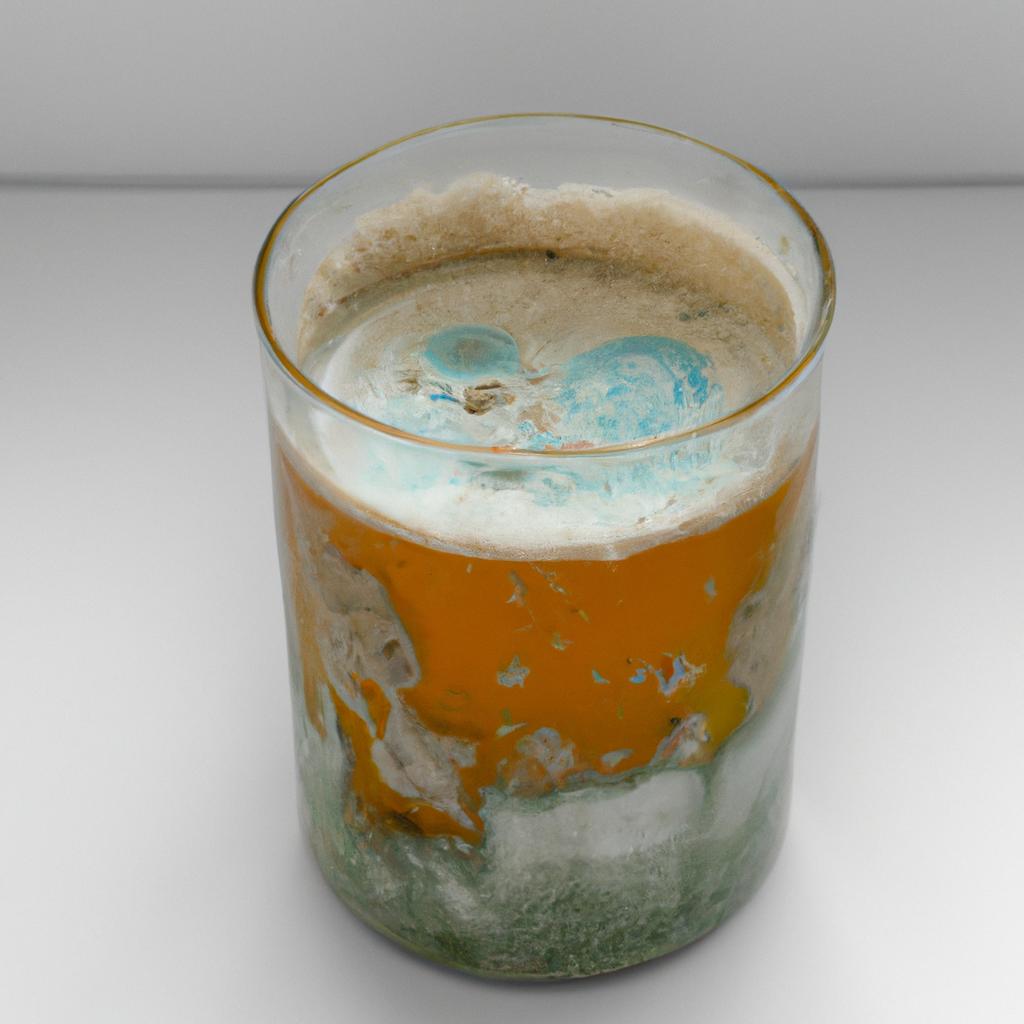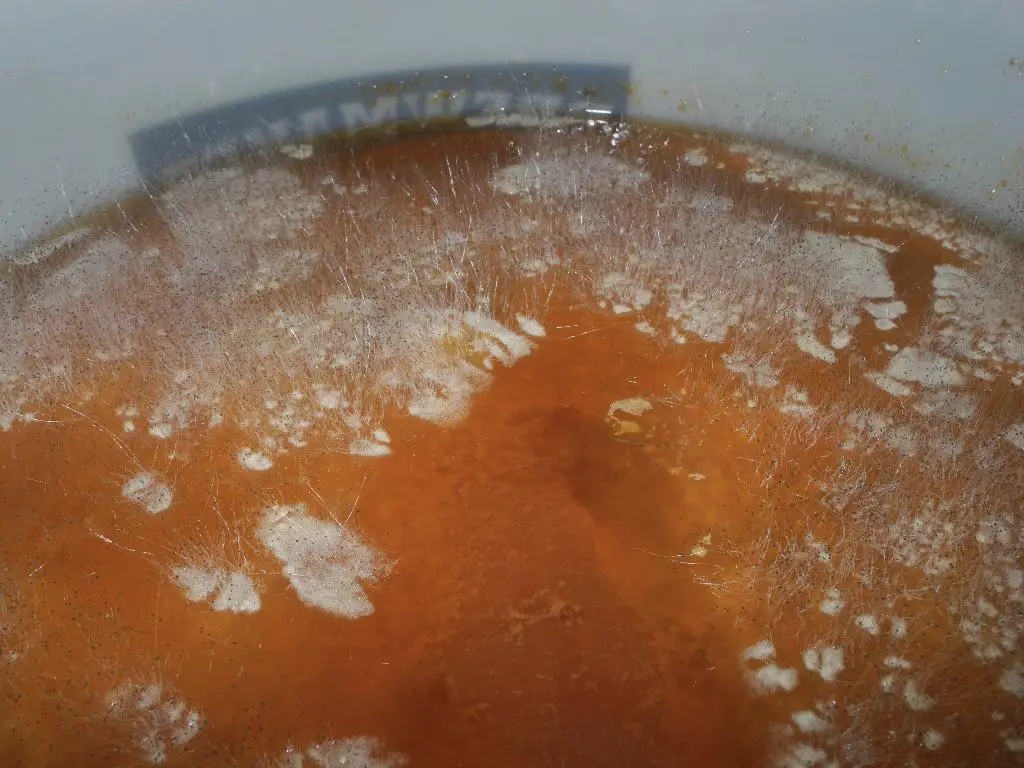As a passionate and experienced brewer, I’ve spent countless hours perfecting the art of crafting the perfect brew. Along the way, I’ve encountered my fair share of challenges and surprises, including the occasional moldy beer.
Can beer get moldy? Yes, beer can get moldy, particularly if it’s stored in poor conditions or exposed to contaminants. However, proper storage and sanitation can help prevent mold growth in your beer.
This got me thinking, how does beer get moldy, and is it safe to drink if you remove the mold? In this blog post, we’ll dive deep into this topic, so you can better understand what causes moldy beer and how to prevent it in the future.
What is Mold?
Mold is a type of fungus that thrives in damp, warm environments. It reproduces by releasing spores, which can spread through air, water, or other means. Mold can grow on virtually any organic material, including wood, paper, and food. In the case of beer, mold can grow on the bottle or packaging, or even within the beer itself if it’s exposed to contaminants.
Mold is not only unsightly, but it can also have negative effects on your health. Some types of mold produce mycotoxins, which can cause allergic reactions and other health problems. In addition, mold can spoil food and beverages, causing them to taste and smell bad.
How Does Beer Get Moldy?
Beer can get moldy through a variety of factors, including:
1. Poor Storage Conditions

Beer should be stored in a cool, dark place, away from direct sunlight and sources of heat. Warm, damp conditions are ideal for mold growth, so it’s important to keep your beer in a suitable environment. Basements and cellars are often great choices for beer storage, as they tend to be cooler and more stable in temperature.
2. Contaminated Bottles or Packaging
Mold can grow on the surface of bottles or packaging if they’ve been exposed to contaminants. This is more common with homebrewed beer, as commercial breweries typically have strict sanitation protocols in place. To prevent mold growth, always clean and sanitize your bottles and packaging materials before use.
3. Exposure to Air (oxygen)
Airborne mold spores can contaminate your beer if it’s exposed to the air for an extended period. This can happen during the bottling process or if a bottle is not sealed properly. To minimize the risk of mold contamination, limit your beer’s exposure to air and ensure that bottles are sealed tightly.
4. Incomplete Fermentation
During the fermentation process, yeast consumes the sugars in the beer and produces alcohol and carbon dioxide. This creates an environment that is inhospitable to mold growth. However, if fermentation is incomplete, residual sugars may remain in the beer, making it more susceptible to mold contamination. Make sure to monitor your fermentation process closely and ensure it reaches completion.
5. Contaminated Ingredients
If any of your beer ingredients, such as grains, hops, or water, are contaminated with mold, it can cause mold growth in your finished beer. Always inspect your ingredients for signs of mold or spoilage before using them in your brew.
Is Moldy Beer Safe to Drink?
In most cases, moldy beer is not safe to drink. Mold can produce harmful toxins, and consuming moldy beer can lead to health issues ranging from allergic reactions to more severe complications. In addition, moldy beer will likely have an unpleasant taste and smell, making it unpalatable. If you suspect your beer is moldy, it’s best to err on the side of caution and dispose of it.
How to Prevent Moldy Beer
To prevent moldy beer, follow these tips:
1. Maintain Proper Storage Conditions
Store your beer in a cool, dark place, away from direct sunlight and sources of heat. This will help to prevent mold growth by creating an unfavorable environment for mold.
2. Practice Good Sanitation
Clean and sanitize all brewing equipment, bottles, and packaging materials thoroughly before use. This will help to eliminate any mold spores or other contaminants that could lead to mold growth.
3. Monitor Fermentation
Ensure that your beer’s fermentation process is complete before bottling. This will help to create an environment that is inhospitable to mold growth by removing residual sugars.
4. Seal Your Beer
Make sure to seal your beer bottles tightly to prevent air exposure, which can introduce mold spores and other contaminants.
5. Inspect Your Ingredients
Check your beer ingredients for signs of mold or spoilage before using them in your brew. This will help to prevent mold contamination from the start.
How to Identify Moldy Beer
If you’re worried that your beer may be moldy, here are some signs to look out for:
1. Visible mold growth on the bottle or packaging
2. A musty or moldy smell
3. An off taste, which may be sour, bitter, or otherwise unpleasant
4. Cloudiness or sediment in the beer
5. A change in color, particularly if the beer has darkened
If you notice any of these signs, it’s best to dispose of the beer and not consume it.
The Bottom Line
Can beer get moldy? Yes, it can, but with proper storage, sanitation, and brewing practices, you can minimize the risk of mold contamination in your beer. Moldy beer is not safe to drink, and if you suspect your beer is moldy, it’s best to dispose of it. By following the tips outlined in this blog post, you can help to ensure that your beer remains mold-free and delicious.
10 Key Facts About Moldy Beer
1. Beer can get moldy, particularly if it’s stored in poor conditions or exposed to contaminants.
2. Mold is a type of fungus that thrives in damp, warm environments.
3. Mold can grow on virtually any organic material, including wood, paper, and food.
4. Moldy beer is not safe to drink, as it can cause allergic reactions and other health problems.
5. Proper storage conditions, such as a cool, dark place, can help prevent mold growth in beer.
6. Sanitation is crucial in preventing mold contamination in homebrewed beer.
7. Incomplete fermentation can increase the risk of mold growth in beer.
8. Contaminated ingredients can also lead to moldy beer.
9. Signs of moldy beer include visible mold growth, a musty smell, an off taste, cloudiness, and a change in color.
10. Preventing moldy beer involves proper storage, sanitation, monitoring fermentation, sealing bottles tightly, and inspecting ingredients for mold or spoilage.
FAQs
Is it OK to drink beer that has Mould around the lid?
No, it is not safe to drink beer that has mold around the lid. Mold can produce harmful toxins that can cause illness or allergic reactions. It is best to discard the beer and purchase a new, unopened one.
Can unopened beer have mold on it?
It is highly unlikely for unopened beer to have mold on it, as the alcohol and low pH level of beer create an environment that inhibits mold growth. However, if the beer was contaminated before it was sealed or stored in a humid environment, mold growth is possible.
Can beer grow fungus?
Yes, beer can grow fungus if it is not stored properly or if it is contaminated during the brewing process. The most common type of fungus that can grow in beer is called Brettanomyces, which can give the beer a sour or funky flavor. However, if beer is stored in a cool, dark place and consumed before its expiration date, the risk of fungal growth is low.
Can unopened beer get moldy?
No, unopened beer cannot get moldy. The alcohol and low pH level in beer prevent the growth of mold and other microorganisms. However, if the beer is exposed to air or other contaminants, it may spoil and develop a sour or off flavor.
Is 2 year old canned beer still good?
Canned beer can last up to a year or more past its expiration date if stored properly in a cool, dark place. However, the taste and quality may deteriorate over time, so it’s best to consume it as soon as possible for optimal flavor. A two-year-old canned beer may still be safe to drink, but it’s unlikely to taste as good as a fresh one.
Can an unopened can of beer go bad?
An unopened can of beer can go bad if it is past its expiration date or if it has been stored improperly, such as in direct sunlight or in a warm environment. However, if it has been stored correctly and is within its expiration date, it should still be safe to drink.




